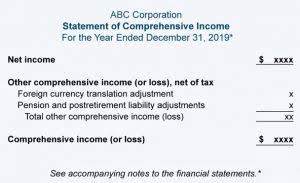
The federal standard deduction for a Head of Household Filer in 2025 is $ 22,500.00. The two most popular tax software packages are H&R Block At Home, sold by the H&R Block tax preparation company, and TurboTax Federal & State, sold by the Intuit software company. Both companies produce multiple editions for simple to very complex tax returns, so Cash Flow Management for Small Businesses be sure to carefully compare the features offered by each package. Illinois also accepts online payments of your tax debt with credit cards and debit cards, or through a bank transfer. There is, however, a convenience fee for the use of a credit or debit card when paying your taxes. As a rule, an individual’s income can be taxed both by the state in which the taxpayer resides and by the state in which the taxpayer’s income is earned.
State Corporate Income Tax Rate Changes
- Connecticut originally planned to begin phasing out the capital base tax, a harmful tax assessed against the average value of a company’s in-state capital, in 2021.
- Although the bill allowed for an accelerated schedule of future individual income tax rate reductions, the revenue conditions were not met for 2025, so the rate remains at 5.39 percent this year.
- This guide covers key aspects of Illinois state taxes, including rates, deductions, filing methods, and potential penalties.
- So if you live in Illinois and work in Iowa, Kentucky, Michigan or Wisconsin, you’ll pay tax to your home state.
Illinois’ flat income tax rate means that every resident, regardless of income level, pays the same individual income tax rate of 4.95 percent. Nonresidents who work in Illinois also must pay income tax to the state, unless they live in Wisconsin, Iowa, Kentucky or Michigan. The only exception is railroad unemployment.More information is on the Illinois Department of Revenue’s website. Watch the video below to learn how to identify your 2024 federal income tax brackets. Nebraska, North Carolina, and Pennsylvania will see reductions in their corporate income tax rates on January 1, 2025.
- The telecommunications tax is a tax on services including home phone lines, cell phones, television service and internet.
- It is sometimes referred to as a “hidden tax,” as it leaves taxpayers less well-off due to higher costs and “bracket creep,” while increasing the government’s spending power., while many others do not.
- Read on for more of what you need to know as a current or prospective Illinois taxpayer.
- In other states, the top rate kicks in at a much higher level of marginal income.
- If you must make estimated tax payments, we encourage you to use an electronic payment option.
When did Illinois’ state income tax increase to 4.95%?

Illinois has $13,094 in state and local debt per capita and has a 51 percent funded ratio of public pension plans. Illinois’s tax system ranks 37th overall on the 2025 State Tax Competitiveness Index. If a refund is delayed beyond the standard processing time, taxpayers may be entitled to interest on the amount owed. Illinois law mandates interest accrual on refunds not issued within 90 days of the filing deadline or the date the return was submitted, whichever is later. However, refunds may be offset to cover outstanding debts, such as unpaid state taxes, child support obligations, or federal tax liabilities. For those who owe taxes, Illinois offers several payment options, including electronic funds transfer (EFT), credit or debit card payments, and paper checks.
How much are property taxes in Illinois?
Brackets will be widened further in 2027, with standard deduction increases phasing in for several additional years. These and other tax changes taking effect on January 1 are detailed below. Many states have routine or less notable tax changes taking effect that are not mentioned here. As a result, Illinois’ corporate income tax rate is among the highest in the country at 9.5 percent, and its 6.45 percent rate on partnerships, S corporations, and trusts is also on the high side regionally and nationally. While the PPRT hurts Illinois’ income tax component scores, Illinois’ decision to replace its tangible personal property (TPP) tax means Illinois scores better on the property tax component than it would if it continued to tax TPP. Illinois’ corporate component score is also hurt by the state’s lack of bonus depreciation allowance under IRC Section 168(k).
- Illinois residents and nonresidents with income sourced from the state must determine whether they need to file a return.
- Taxpayers can claim 25% of eligible expenses, up to $750 per family, covering costs like tuition and lab fees.
- The tax is applied to wages, salaries, and other compensation within certain thresholds, which are adjusted periodically.
- Effective October 1, 2024, ESSB 6038 expands the Business & Occupation Tax exemption for certain childcare services provided by businesses primarily engaged in providing childcare.
- The state enacted S3432 to create the Next New Jersey Program to encourage the development of artificial intelligence investments.
Electricity delivered into an electric vehicle will be taxed at a rate of 3 cents per kilowatt-hour. Effective October 1, 2024, ESSB 6038 expands the Business & Occupation Tax exemption for certain childcare services provided by businesses primarily engaged in providing childcare. Vermont will begin to levy an electric vehicle infrastructure fee on January 1, 2025. Drivers of battery electric vehicles will be required to pay $89 for one year, in addition to the standard $89 registration fee. Drivers of plug-in hybrid vehicles will pay half the rate, $44.50, for one year.
- The State of Illinois collects $7,379 in state and local tax collections per capita.
- As a result, New Hampshire will officially join the ranks of states that do not levy an individual income tax at all.
- Taxpayers should maintain detailed records of these contributions, including receipts, to ensure compliance.
- Effective January 1, 2025, the tax rate goes down from 4.7 percent to 4.4 percent (applied on taxable income exceeding $10,000).
- As of January 1, 2025, there will be a new formula in place for calculating net losses incurred in both pre- and post-2025 tax years, though the real improvements will not begin until 2026.
Connecticut Tax Changes Effective January 1, 2025
Efforts to introduce a graduated tax system, such as the failed 2020 “Fair Tax” referendum, have been unsuccessful. Starting January 1, 2025, Nebraska will see a significant reduction in its top individual income tax rate, which will be lowered from 5.84 percent to 5.2 percent. This is part of a broader plan to gradually reduce the top rate to 3.99 percent by 2027. Additionally, the number of tax brackets will be consolidated from four to three over the next few years. These changes are aimed at providing tax relief to residents and simplifying the tax system. The corporate income assets = liabilities + equity tax rate will also be reduced from 6.50 percent to 6.24 percent on January 1.


Illinois adjusts AGI with state-specific modifications, such as deductions for federally taxed Social Security benefits and military pay exclusions. Discover Illinois’s individual income tax, which applies to both residents and non-residents of the state. The tax is calculated based on an individual’s federal-adjusted gross income and has a flat rate of 4.95%.

2 – Illinois Personal Exemptions
The Property Tax Credit allows residents to claim 5% of property taxes paid on their principal illinois income tax rate residence, easing the property tax burden. Contributions to Illinois College Savings Plans are deductible up to $10,000 for individuals or $20,000 for joint filers. Calculating taxable income in Illinois begins with an individual’s adjusted gross income (AGI) based on federal guidelines.
Non-residents with Illinois-sourced income, such as wages from an Illinois employer, must also file, typically using Schedule NR. The state follows federal adjusted gross income (AGI) as the starting point for tax calculations, with certain Illinois-specific additions and subtractions. Notably, federally taxed Social Security benefits and retirement income from pensions, 401(k)s, and IRAs are exempt from Illinois taxation. On June 19, 2024, Gov. Sarah Huckabee Sanders (R) signed SB 1 into law, reducing the top individual income tax rate from 4.4 percent to 3.9 percent, retroactive to January 1, 2024.






